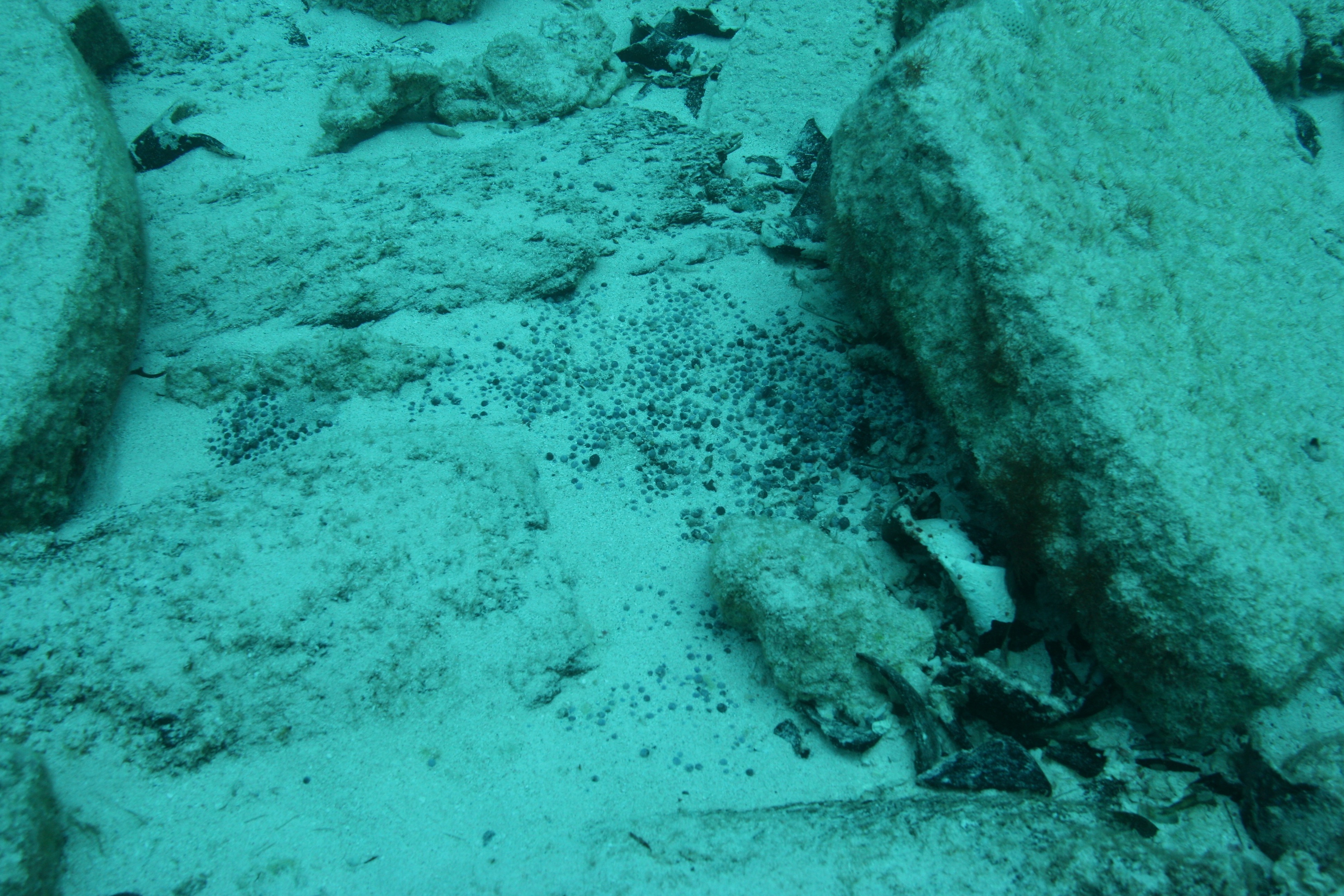Built in 1814 in Durham, the English brigantine, the Caeser, was lost on a reef off the west end of Bermuda on May 17, 1818. En route from Shields, England to Baltimore under the command of Captain James Richardson, the ship was sailing with a crew of seven and a cargo of grindstones, bricks, medicine vials, decorated flasks, grandfather clock parts, glassware, white red and black lead oxide, and a marble cornice for a Baltimore church. The ship was heavily salvaged at the time of her sinking, and telltale evidence of this salvage operation can be found around several nearby docks where parts of her distinctive cargo can be found.
The wreck was rediscovered lying in a sand hole in 35 feet of water in 1957 by Teddy Tucker, who used Herbie Smith’s old salvage boat, The Ruby, to retrieve what remained of the Caeser’s cargo. Results of this salvage effort can still be found around Bermuda. Over 500 bricks were recovered and used in the renovation of the old Rum Runners Building, now the restaurant and bar Café Cairo (where some of the bricks can be seen on the wall at the top of the entrance steps). Many of the smaller grindstones were used as sharpening stones or to make pathways at Bermuda hotels like Cambridge Beaches and private homes.
The salvage effort led to the discovery of one of the most unique elements of her cargo: highly distinctive Masonic flasks. Some of these flasks were already in Bermuda collections, and the riddle of their origin was only discovered after the Caesar was re-discovered. Their uniqueness identified them as being passed down since the time of the original salvage.
CURRENT CONDITION
One of the most distinctive elements on the wreck itself is the remains of her cargo of grindstones – a critical traded goods for the U.S. because no good source of the stones had yet been found in the U.S. to fulfill their purpose. Today the largest grindstones weighing over a ton can be still found stacked on the site, sitting atop the wooden remains of her hull. Remains of porter bottles; glass necks and bases of black glass bottles are strewn throughout the sand hole and her exposed timbers, and lead birdshot collects in shallows on the site. The Caeser’s remaining bottom timbers are clearly visible especially after the winter storm surges and she can be alternatively covered or exposed if there is an active hurricane season. The wreck features and sand hole combine to make an aesthetically pleasing dive with rich reef and fish life throughout.
STATISTICS
Location: 32°15'33.55"N, 64°58'54.12"W Length: Unknown Depth: 25-35 feet (7.6 to 10.7 meters)










